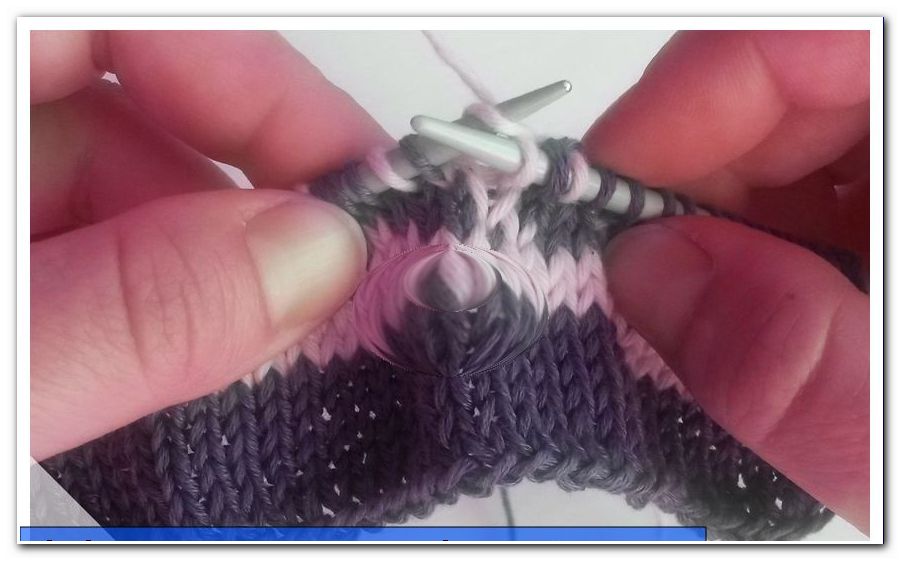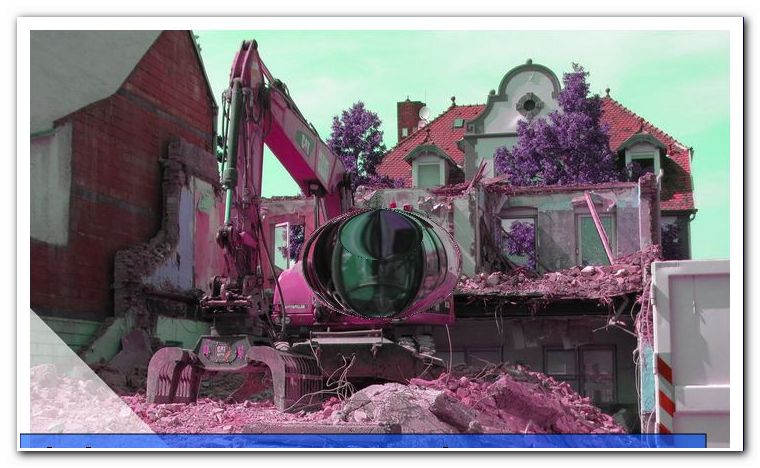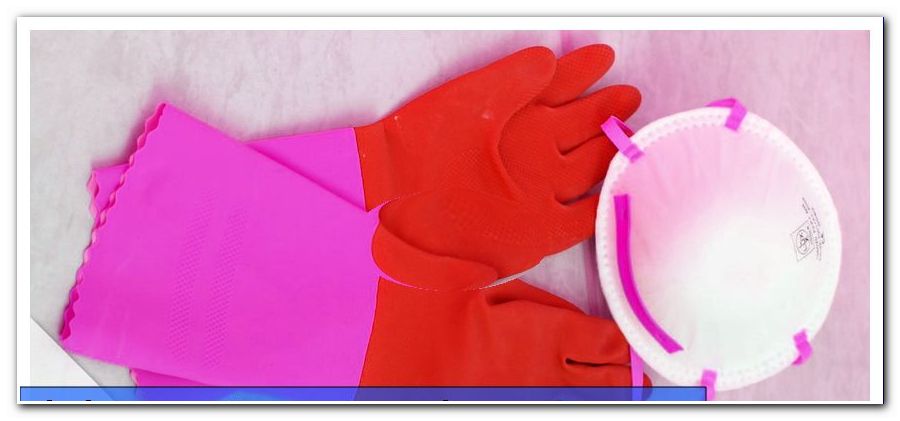Remove Cement Veil - Apply Cement Veil Remover

- The preparation
- The implementation
- The watering
- The cement curtain remover
- Alternative treatment with home remedies
- The application of lemon juice
- The application of a vinegar mixture
- The application of detergent
As part of a renovation of the bathroom and kitchen, new tiles are often brought to the walls. These must of course be grouted so that the grooves are protected against dirt and external influences. When grouting unfortunately often creates a gray haze, also called cement veil, which persists stubbornly on the tiles. Normal detergents do not bring much, but there is still a solution.
Especially when light tiles are supposed to beautify the look of the new bathroom, the grayish sheen of the cement immediately catches the eye. Many do-it-yourselfers first try to remove the unsightly film with home remedies, but such attempts are rarely crowned with success. While the use of citric acid in small areas may still be worthwhile, chemical agents are required for larger areas. The Cement Veil Remover helps to thoroughly clean even bright tiles. But by no means can any material be treated with it, and prudence is required when using it. With a few tricks, you can easily kill the annoying cement veil yourself.
On your shopping list you need:
- Cement residue remover
- Protective gloves
- Respirator
- water
- Broom and dustpan
- several mops
- old cleaning bucket for the mixture
- possibly a mop for cleaning the ceiling
- Replaceable head for the mop
- possibly lemon juice
- possibly vinegar
- possibly washing powder
The preparation
Before you can use a cement removal cleaner, the joints must be thoroughly dry. In numbers this means that at least one week has to pass between grouting and cleaning. If you use the cleaning agent in the past, the joints may loosen and permanent damage may occur.

Before using the Cement Veil Remover, you must provide a dust-free environment. The easiest way to achieve this is to sweep the area to be treated with a broom. Do not forget the wall tiles and the ceiling tiles, because here, too, the cement veil spreads only too gladly after grouting.
Tip: Keep the vacuum cleaner at hand to reliably remove the cement residue.
The implementation
Not every tile material is suitable for the use of a fog remover, so you should check it out before use for safety's sake. It is best to use a leftover tile to test the cleaner. If there is no loose tile, find an inconspicuous place in your room and test the remedy there. Use the Veil Remover exactly as directed and check if the surface or the color of the tile changes. Some natural stones are very sensitive and react with discoloration on a cement scum remover. In this case, you should resort to a phosphate cleaner and refrain from using the professional product. As an alternative, you can also use home remedies, which however can not always be used with the best possible results. However, the use of lemon, vinegar and Co. has proven itself in the case of low-grade contamination and is well worth a try if a conventional cement-film remover is out of the question.

The watering
It is necessary to thoroughly water your tiles before using the cleaner. This has the meaning that the joints and any existing natural stone suck full of water and thereby not absorb the cement film remover. This prevents damage to the material caused by the aggressive cleaning agent. Prepare a cleaning bucket with water and use a cloth to apply. Wet it thoroughly and wipe over the tiles. For the blankets and walls, wrap the rag around a scrubber. Make sure that the entire room is evenly damp before you start the actual cleaning.
The cement curtain remover
 In order to permanently remove the cement haze, you can apply the product (observe packaging instructions) neat or diluted with water in a mixing ratio of one to ten. For heavy soiling, the pure application is recommended. If you decide on a mixture, you should use an old cleaning bucket for mixing, which you can dispose of after use. Be careful not to exceed the mixing ratio of one to ten. Lower water is possible. If possible, open a window during the application to remove the odor from the room. Even after cleaning, it is advisable to thoroughly ventilate. In rooms without windows, the door should be opened so that the smell can be removed.
In order to permanently remove the cement haze, you can apply the product (observe packaging instructions) neat or diluted with water in a mixing ratio of one to ten. For heavy soiling, the pure application is recommended. If you decide on a mixture, you should use an old cleaning bucket for mixing, which you can dispose of after use. Be careful not to exceed the mixing ratio of one to ten. Lower water is possible. If possible, open a window during the application to remove the odor from the room. Even after cleaning, it is advisable to thoroughly ventilate. In rooms without windows, the door should be opened so that the smell can be removed.
Apply the Veil Remover with a cloth thoroughly on all surfaces and distribute it well. Be sure to wear gloves as this may cause skin irritation. The exposure time is based on the instructions on the packaging, but usually this is five to ten minutes. Now take a washing brush and brush over the affected tiles with even movements to remove the cement haze.

Then wipe the remains thoroughly with a water-soaked wipe. It is necessary that you remove the cleaning agent completely from the tiles and that you rinse with plenty of water.
Tip: For walls and ceilings, a mop with replaceable attachment is suitable.
First carry out a basic cleaning with the cloth to remove all cement residues. After this step, use a new cloth and wet the surfaces to be treated. In the third step, dry the tiles with a microfiber cloth or kitchen crepe and check that the cement curtain has been completely removed. If any remains of the veil are on the tiles, reuse of the remover is required. You can repeat the step several times until the cement curtain has completely dissolved. It is important that you work thoroughly with a brush after applying the cleaning agent, in order to really release the coating. However, avoid the joints during this work to prevent damage from brush abrasion.
Summary:
- Step - Use the cleaner pure or mix it in a ratio of one to ten.
- Step - Now take a rag and carefully apply the remover to all tiles.
- Step - Now wait for ten minutes to act.
- Step - Carefully brush the tiles with a washing brush.
- Step - Wipe off the cement residue with plenty of water and rinse thoroughly.
- Step - Control the effect and if there are any leftovers.
- Step - If there are any leftovers, start again from step one.
Alternative treatment with home remedies
If you have misplaced sensitive tiles in your room, or you do not want to use the chemical cleaning agent, you can try solving the annoying veil with home remedies. However, the result is often insufficient for heavy soiling. However, if the tiles are only covered with a light haze or if a chemical cleaner can not be used due to the material, these methods are recommended. The two most common home remedies are lemon juice and a mixture of water and vinegar. As a third alternative, conventional powder detergent has proven itself.

The application of lemon juice
When using lemon juice, you can use a finished product from the supermarket, if it is pure juice. Alternatively, you can simply squeeze the fruits. Apply the lemon juice by spreading it thoroughly on the tiles and allowing it to soak in for a short time (maximum two to three minutes). Then use a damp cloth to smoothly remove the remains. If the veil does not dissolve after use, you can use a lemon juice concentrate and repeat the process. Should this measure also be unsuccessful, the chemical cleaning agent remains as the last alternative.
Tip: Alternatively, you can also use citrus essence.
The application of a vinegar mixture
Vinegar is also an indispensable part of modern households in terms of cleaning. For the removal of cement veils, use vinegar in a mixing ratio of one-quarter liter to five liters of water. Make sure that you do not use vinegar essence, otherwise the mixing ratio would be much too strong. What is meant is commercial household vinegar (wine vinegar), but not apple cider vinegar. Carefully apply the mixture to the veiled areas with a cloth and wait for at least five minutes. Then carefully scrub the tiles with a brush and wipe with plenty of cold water. If the veil has not been released during initial use, further cleaning passes are necessary.
The application of detergent
You can also use detergent powder to remove cement veils, however, this method is only possible for light soiling and simultaneous use of an angle grinder. Mix the washing powder with water (25 grams per 2 liters of water) and apply carefully with a rag.

Then install a brush on the angle grinder and remove the veil residue from the tiles.
Be sure to use this method only on natural stones, not on smooth surfaces, as they may retain cracks through the brush.
Tips for quick readers:
- Only use cement scum remover on suitable floors
- Application depends on packing instructions
- Test agent in an inconspicuous area
- Loose tile ideal for testing
- Thoroughly clean the room from dust
- Turn ceilings and walls carefully
- Use vacuum cleaner to dispose of fine dust
- Fill the cleaning bucket with clear water
- Well water the room, including the ceiling areas
- Wear protective gloves before use
- Generously apply and distribute the Cement Veil Remover
- Maintain a reaction time of at least five minutes
- Brush off tiles thoroughly with a washing brush
- then clean with plenty of water
- in case of further contamination repeat the procedure




